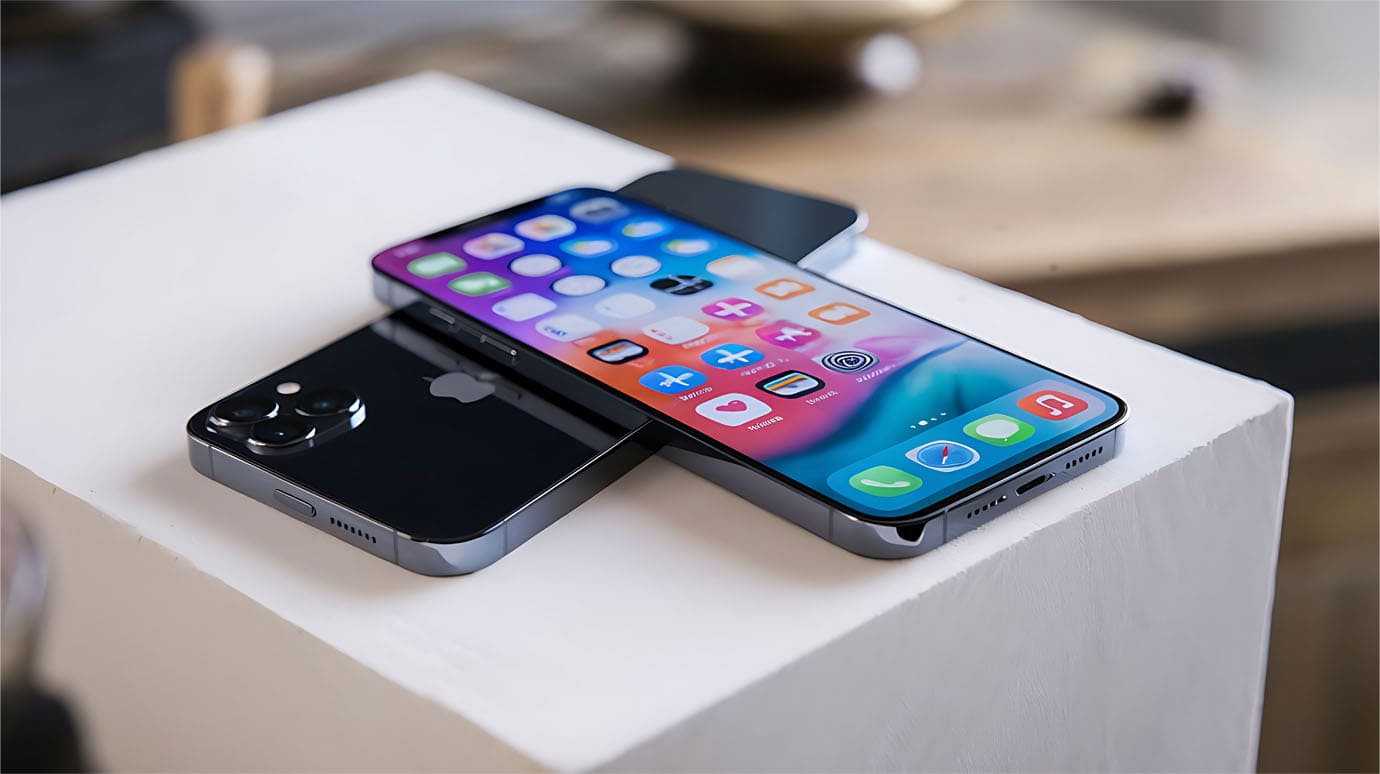As iOS 26.1 prepares to roll out to iPhones, we at Digital Otters are diving into what this update brings and why you should care. From subtle interface tweaks to expanded language support and smarter controls, iOS 26.1 may not be a major overhaul—but it offers meaningful enhancements that improve everyday use.
Here are eight standout features of iOS 26.1 (plus one bonus) — and what they mean for you.
1. Customisable “Liquid Glass” Transparency
One of the most visible changes in iOS 26 was the new Liquid Glass interface—glass-like, translucent layers and fluid visuals. Some users felt the transparency made things harder to read. With iOS 26.1, Apple introduces a toggle between Clear and Tinted modes, allowing you to increase opacity for better legibility.
Why it matters: If you find UI text hard to read or prefer a more confident contrast, this gives you control.
Tip: Go to Settings → Display & Brightness → Liquid Glass to switch to Tinted and test whether your eyes prefer it.
2. Expanded Language Support for Apple Intelligence & Live Translation
iOS 26.1 broadens the language capabilities of two major features:
- Apple Intelligence now supports eight additional languages: Danish, Dutch, Norwegian, Portuguese (Portugal), Swedish, Turkish, Chinese (Traditional), and Vietnamese.
- Live Translation with AirPods support adds Japanese, Korean, Italian, and both Traditional & Simplified Chinese.
Why it matters: If you work across languages or travel, being able to translate speech or text in more languages is a big boost.
Tip: Pair compatible AirPods (e.g., AirPods Pro 2, AirPods 4) and test translation in a language you’re curious about.
3. Improved Music & Media Controls
Music fans will appreciate the new gesture updates:
- In Apple Music, you can now swipe left or right on the MiniPlayer to skip tracks.
- In the Photos app, the video-scrubbing slider has been redesigned for improved usability.
Why it matters: These are quality-of-life enhancements: more intuitive gestures and smoother media control.
Tip: Play a video and test the scrubber; in Music, experiment with the new swipe gesture and see if it feels natural.
4. More Lock Screen Control & Privacy Options
Apple gives you more granular options for how your iPhone behaves from the Lock Screen:
- A new setting lets you disable the swipe-to-open camera from the lock screen (via Settings → Camera → Lock Screen Swipe to Open Camera).
- Alarms in the Clock app now require a slide to stop (instead of a tap), reducing the chance of accidentally dismissing an alarm when you meant to snooze.
Why it matters: Better privacy and fewer unintended actions when your phone is locked.
Tip: If you often trigger the camera accidentally from the lock screen, disable the swipe setting and see how it changes your lock‐screen behaviour.
5. UI Tweaks in Settings, Calendar & Safari
While not headline features, these refinements refine the experience:
- Settings app: text in section headers shifts to left alignment for improved readability.
- Calendar app: List view now shows events with full-width colour backgrounds.
- Safari: Bottom Tab Bar is made wider with less padding, and the UI is slightly adjusted for clarity.
Why it matters: These little changes improve the feel of day-to-day navigation and app usage.
Tip: After updating, open Settings and Calendar to compare the look and see if you prefer the new styling.
6. Enhanced External Accessory & Microphone Support
iOS 26.1 also brings under-the-hood improvements for power users:
- Better gain control for external USB microphones when using local capture.
- Code in the beta suggests early groundwork for third-party smartwatch compatibility via a new “Notification Forwarding” feature and pairing frameworks.
Why it matters: If you use external mics or non-Apple smartwatches, these features hint at better future support.
Tip: If you record audio on iPhone with external gear, check how the new gain controls perform after updating.
7. Stronger Security & Background Updates
Security continues to be a priority:
- The previously known “Rapid Security Response” is rebranded as “Background Security Improvement” — a feature that allows automatic delivery of system files and security patches outside major updates.
Why it matters: Faster security patches means less waiting for full update cycles.
Tip: Check your Settings → General → Software Update after installing to confirm you’re receiving the new background patches.
8. Performance & Compatibility Fixes
While not glamourous, scheduled performance refinements and bug-fixes make a real difference:
- Improved battery and thermal performance reported in storage of earlier betas.
- Compatibility improvements for various apps and features.
Why it matters: Stability enhancements prolong device lifespan and reduce frustration.
Tip: After updating, monitor battery usage and performance (via Settings → Battery and Settings → General → iPhone Storage) for a few days to see if you notice improvements.
Bonus: When and How to Update
According to reports, the public release of iOS 26.1 is expected very soon, with dates such as Monday, 3 November 2025 being mentioned.
Before you update:
- Back up your iPhone via iCloud or Finder.
- Ensure you have enough free storage (typically 5-10 GB).
- Plug your device into power or ensure battery is >50% and WiFi is strong.
- After updating, browse the settings mentioned above to personalize the new toggles (e.g., Liquid Glass mode, Camera swipe disable).
Final Thoughts
iOS 26.1 isn’t about revolutionary new features—it’s about refining the experience of iOS 26. For users of older iPhones, or those who prefer subtle polish over bold change, these updates add real value: better readability, more gesture control, language expansion, and improved accessories support. From our perspective at Digital Otters, if you rely on your iPhone for daily productivity or creative work (audio recording, translation, accessibility), this is a worthwhile update.


